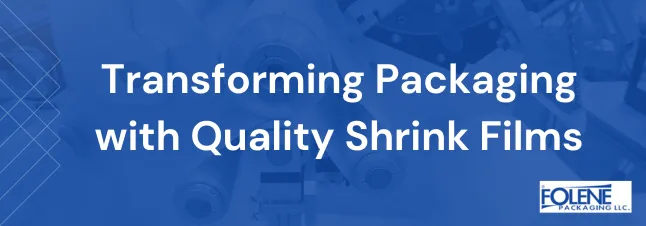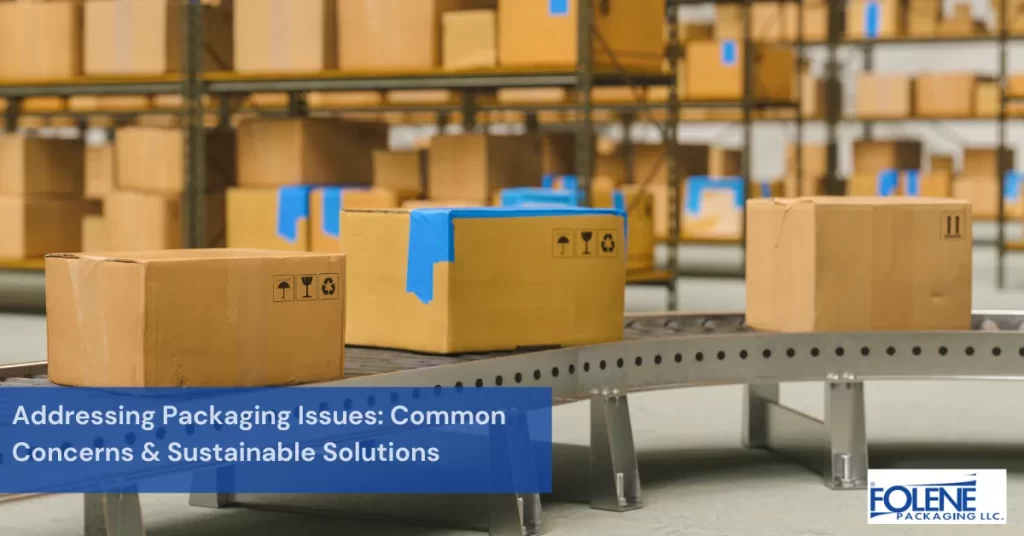
Every industry has its pain points, and the packaging industry is no exception. Balancing costs and operational metrics with regulatory requirements and environmental concerns is a significant challenge for packaging managers. Folene Packaging addresses several common packaging issues to arm you with the information you need to confront them confidently with viable solutions.
Environmental Issues in Packaging: Confronting Packaging Waste
As more brands incorporate environmental awareness into their core values and operations, the environmental impact of plastic packaging becomes a significant concern. Plastic certainly gets a bad wrap and the pressure is likely on you to find a more sustainable solution.
Environmental Impact of Plastic Packaging
Plastic packaging waste contributes to pollution, littering, and ecosystem degradation. It is associated with high energy consumption, natural resource depletion, and greenhouse gas emissions during production. The plastic waste clogs landfills and oceans and harms human and animal health and quality of life. Let’s examine the key culprits of environmental issues in packaging and offer some solutions:
Unsustainable Packaging Practices

Overpackaging. Excessive use of packaging materials results in an incredible amount of packaging waste, all in the name of product protection. Bulky boxes, multiple layers of plastic, non-recyclable void fillers, and individually wrapped components all contribute to an enormous amount of waste.
Single-use packaging, use-and-toss plastic water bottles, and non-reusable plastic bags contribute to extensive waste and pose a significant environmental challenge, as they are consumed and disposed of at alarmingly high rates.
Non-recylable packaging materials, like polystyrene, persist in landfills indefinitely, presenting a huge environmental concern.
Non-renewable resources in plastic packaging production is also a top concern, as the high demand for plastic packaging quickly depletes non-renewable environmental resources.
These top environmental concerns are important to address to align your company’s packaging procedures with company values and consumer preferences. Let’s explore some solutions to discuss with your Chief Sustainability Officer.
Offering Sustainable Packaging Solutions
Migrating to sustainable packaging means using packaging materials and practices with minimal ecological footprint throughout their lifecycle. It is crucial for businesses and brands striving toward sustainability and reducing environmental harm. Here, we explore several sustainable packaging solutions to combat common environmental packaging issues.
Sustainable Packaging Solutions
1. Biodegradable Packaging Options
Biodegradable and compostable packaging serve as sustainable alternatives to traditional packaging materials. Choosing materials that naturally disintegrate back into the Earth without harsh chemicals or labor-intensive waste management processes means less waste in landfills and more nutrient-rich soil. Folene Packaging offers Ecolene® biodegradable shrink film as an environmentally friendly alternative to traditional shrink films. Check out our roundup of compostable packaging options for further ideas.
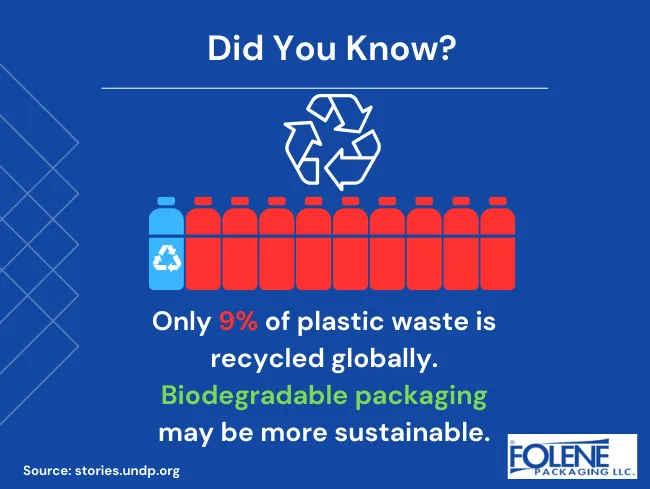
2. Minimalist Packaging
Rightsized packaging that fits the product snugly offers effective protection minus the bulk and packaging waste. Lightweight and minimalist packaging focuses on reducing packaging materials’ overall volume and weight without compromising product protection. Shrink film is very well-suited to minimalist packaging, as it provides a perfect-fit protective packaging layer for products without using excess materials and bulk.
Cutting down on unnecessary overpackaging is effective at reducing waste as well as generating cost-savings that can be reinvested into the company. Although not always feasible, transitioning from single-serve packaging to multipack and unitized packaging can further reduce packaging waste and weight, as well as lower shipping costs.
3. Eco-Friendly Packaging Materials
Focusing on packaging that supports a circular economy is another tactic to address environmental concerns. Post-consumer recycled (PCR) packaging materials are made primarily from post-consumer recycled content, which reduces demand for virgin materials and diverts waste from landfills. Ecolene® AP-XPCR film utilizes over 50% PCR content, relying less on unrewenable resources and supporting a more sustainable supply chain. Utilizing more sustainable materials in packaging, such as recycled plastic, can create eco-friendly packaging solutions.
Overcoming Challenges and Limitations: Balancing Sustainability and Costs
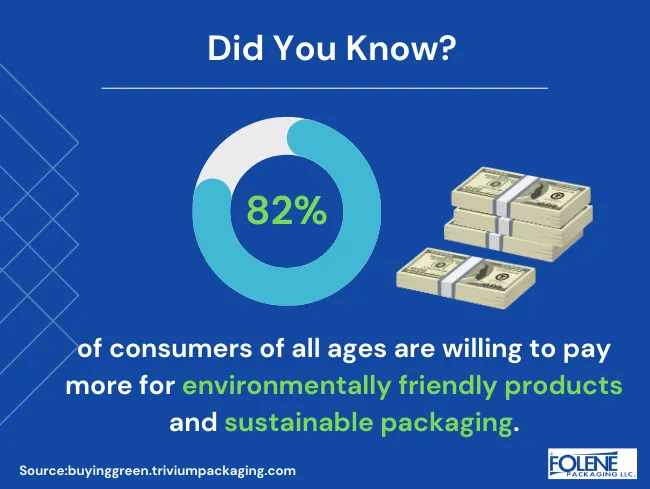
Economic tensions are becoming harder to manage and necessitate systemic and market changes. Companies must balance their sustainability goals with cost considerations, being realistic about budget, while continuously exploring emerging sustainable solutions. However, as more consumers indicate valuing sustainability as a significant factor in purchasing decisions, a higher price point for sustainable packaging may be a worthwhile investment in customer alignment, brand reputation, and marketing efforts.
Packaging Issues in Transportation
Another significant issue in packaging that manufacturers and distributors must grapple with constantly is transportation. Especially in today’s age of next-day delivery expectations, the ever-pressing question is how to get items from point A to point B safely, quickly, and cost-effectively. The packaging decisions you make will influence your lead times, transportation costs, and overall profitability. Let’s examine a few solutions to common packaging issues in transportation:
- Package weight contributes to high transportation costs. Bulky packaging not only creates environmentally hazardous waste but also drives up the package weight and total shipping costs. On the flip side, choosing minimalistic shrink packaging to rightsize your protective secondary packaging can significantly reduce package weight and lower shipping costs across the board.
- Protecting sharp, oddly shaped, or exceptionally heavy items in transit. This can pose a logistical problem, particularly if you want to downsize your packaging. However, Folene Packaging offers a range of films particularly well suited for these non-standard products, including Flxtite® AP-XH, which provides robust product protection while eliminating excess packaging bulk and waste.
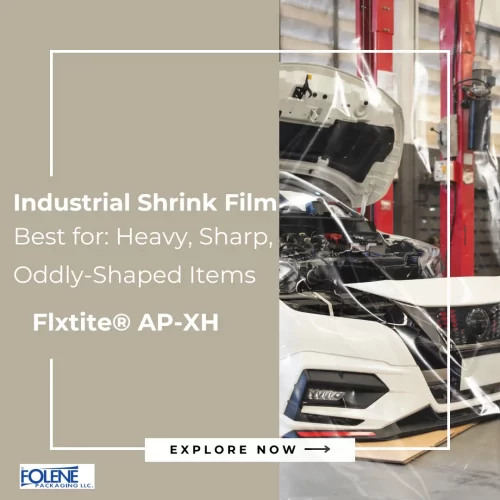
- Finding cost-effective pallet wraps for shipping large quantities of items and bulk orders. Packing pallets well is an essential part of ensuring the lowest shipping costs and lean operations. Read our guide to stretch wrap vs shrink wrap to learn how to calculate the best value pallet wrap (and it isn’t the lowest price per pound).
These top packaging issues in transportation can be a challenge to find solutions for on your own. We hope you’ve found our guide informative and helpful in directing you to industry solutions.
Food Packaging Issues
Food packaging comes with its own unique set of challenges, particularly in the high-turnover perishable food industry. Let’s address several high-friction food packaging issues and suggest viable solutions.
Large quantities of perishable foods expire before purchase, contributing to massive food waste.
Packaging innovations, such as MAP packaging technology, can slow the rate at which foods expire and preserve freshness for longer. This extends the sales window, reducing waste and increasing profit margins- a win-win solution for manufacturers, retailers, and consumers.
Refrigerated and frozen foods often have poor visibility due to the packaging fogging over from the low-temperature environment, dragging down sales. Anit fogging film, such as Flxtite® AP-XF eliminates fogging, maintaining package clarity even in low refrigerator and freezer temperatures.

Packaging multiple types of foods can mean high packaging costs, with different-sized containers for different food and beverage items. Flexible packaging film solves this common problem by providing a flexible solution that can be customized to the product dimensions and adjusted between runs for ultimate compatibility. Consider your food item’s packaging needs to determine if this might be a good solution for your company. Many companies decide it is at least worth a thorough packaging test, as the potential cost savings are significant.
Addressing Packaging Issues: In Conclusion
The packaging industry is fraught with difficulties, environmental challenges, transportation issues, food packaging problems, and so many more. As a leading supplier of premium quality shrink films, Folene Packaging leads the discussion on addressing these issues head-on. Still struggling with a packaging issue? Reach out to our packaging experts at Folene Packaging, and we’ll be happy to assist you in choosing a viable solution that fits your application and needs.
